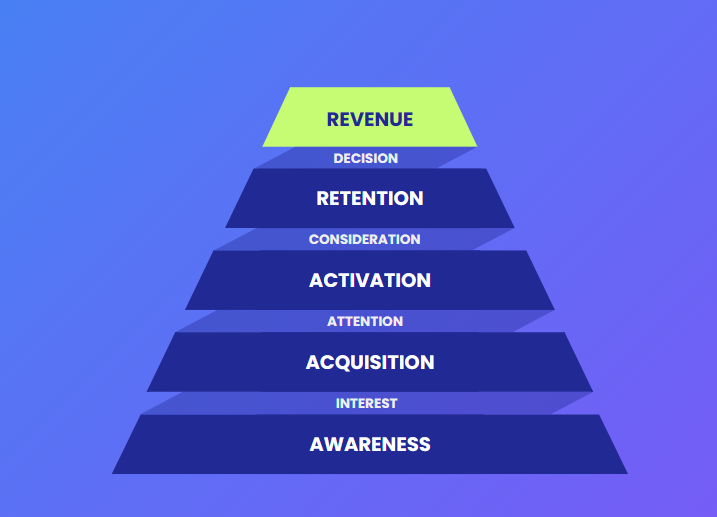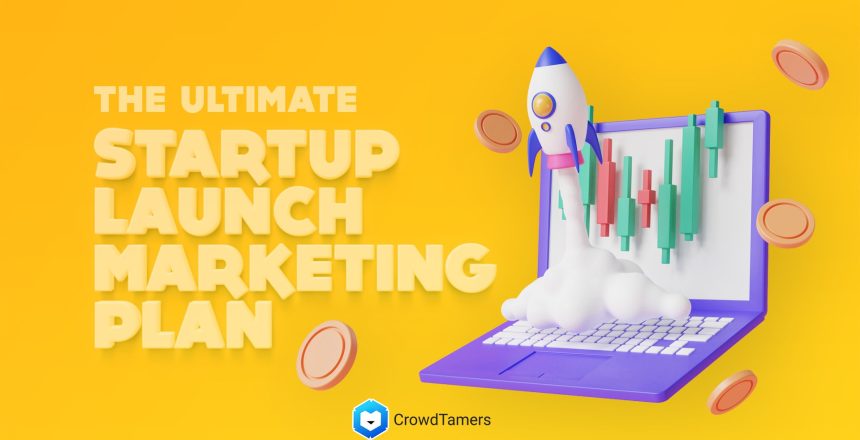Was your last market launch planned with a doc that looks like this?

Ugh.
If you’re a technical founder, you probably know what this looks like, and you hate it. This is called “Waterfall development” and it is risky, error-prone, usually late, and a generally terrible way to launch a product.
So why the heck does marketing still look this way?
In part because marketers aren’t generally good at atomizing complex marketing strategies into low-risk, easily testable components that you can reuse across multiple efforts. You know: a framework.
Here’s the startup launch framework that’s been key to the dozens of successful startup launches that CrowdTamers has kicked off over the last 3 years.
The Framework:

The Startup Launch Pyramid covers the basic ideas you need to understand when you’re starting to market something. There’s a crucial part of this pyramid here that you need to understand to use this framework: the gaps between the big blue blocks of the pyramid are crucial.
These gaps are where our audience (visitors, leads, prospects, whatever you wanna call them) decide if they’re going to climb up the to the next step of the pyramid or not.
We need to measure these gaps and understand what percentage of our audience climbs up that pyramid.
The Numbers You Should Aim For in Each Gap
- Interest – Ad Clickthrough Rate (CTR): Most ads on Facebook have an average CTR of half of 1%. If you achieve over 1%, you’re outperforming about 60% of ads out there. This is your first step.
- Attention – Landing Page Sign-Up Rate: Aim for a minimum sign-up rate of 3%. Stellar landing pages can achieve between 7% to 15%. If you can’t hit 3%, it’s a sign to rethink your landing page.
- Consideration – Activation Rate: This isn’t just about acquiring an email address. Activation indicates a proactive step by the user, such as trying out a feature or booking a call. Aim for a 1 in 5 or 20% activation rate.
- Decision – Close Rate: From that 20%, at least 30% should convert.
When you’re building your pyramid, just like a real pyramid you will find that you cannot build a level until you have a solid foundation under it. That means if you’re not hitting your goal numbers at one stage of the pyramid DON’T GO FURTHER UNTIL YOU DO. This is how you have a low-risk, high-speed framework for your marketing efforts.
Don’t build a whole campaign and hope that you’re successful.
Build each level of your pyramid, one brick at a time. Have an ad with a 1% CTR? Great, now make a landing page. Can’t crack a 3% signup? Try again until you can.
And so on.
Forward-looking costs.
Knowing your rough annual value and your minimum performance metrics from above, suddenly you can make projections that will let you know if a campaign is apt to be a complete failure in minutes.
The “cost per mille” or CPM indicates the cost you’re willing to incur for a thousand people to hear about your product. The math for it varies based on what your average annual value of a user is. Some examples:
- $10 Average Revenue Per User (ARR) = Almost unachievable $0.60 CPM
- $100 ARR = Roughly $6 CPM (achievable on platforms like Meta, Twitter, and TikTok, but not on LinkedIn or video)
- $1,000 ARR = About $60 CPM – you can hit this goal anywhere
Key Questions to Guide Your Marketing Campaign

As you strategize, there are four crucial questions to consider:
- Audience, Problem, Offer (APO) Fit: Do you understand your audience’s needs and have the right offer for them? If not, start with Minimum Viable Sprint Tests to pinpoint your fit.
- Channel Fit: Platforms matter. For instance, while Meta (formerly Facebook) remains dominant for certain age groups, younger audiences might be more active on TikTok or YouTube. It’s essential to identify where your audience spends time.
- Metrics Readiness: Can you track your campaign’s journey from ad click to conversion? You need insights into every step to identify bottlenecks and improve.
- Goal Setting: Define your objectives. Whether it’s a target cost-per-click (CPC) or a landing page conversion rate, having clear goals helps you measure success.
The Big Picture
This data-driven approach isn’t just about the numbers. It’s about understanding the holistic journey of your potential customer. By knowing where to start and what benchmarks to aim for, you can make informed decisions, pivot when necessary, and build a marketing strategy that’s set up for success from the outset.
When you’re ready, build each step meticulously. And remember, as your business evolves, these numbers might change. However, having this foundational knowledge will always serve as a valuable guidepost.
Want to know more? Want the full 40-minute class on how to build and use the Startup Launch Pyramid? Check out Gotomarket.courses, join our free community, and sign up for this and 9 other lessons all about building & launching your startup the proven CrowdTamers Grow to Market way!



